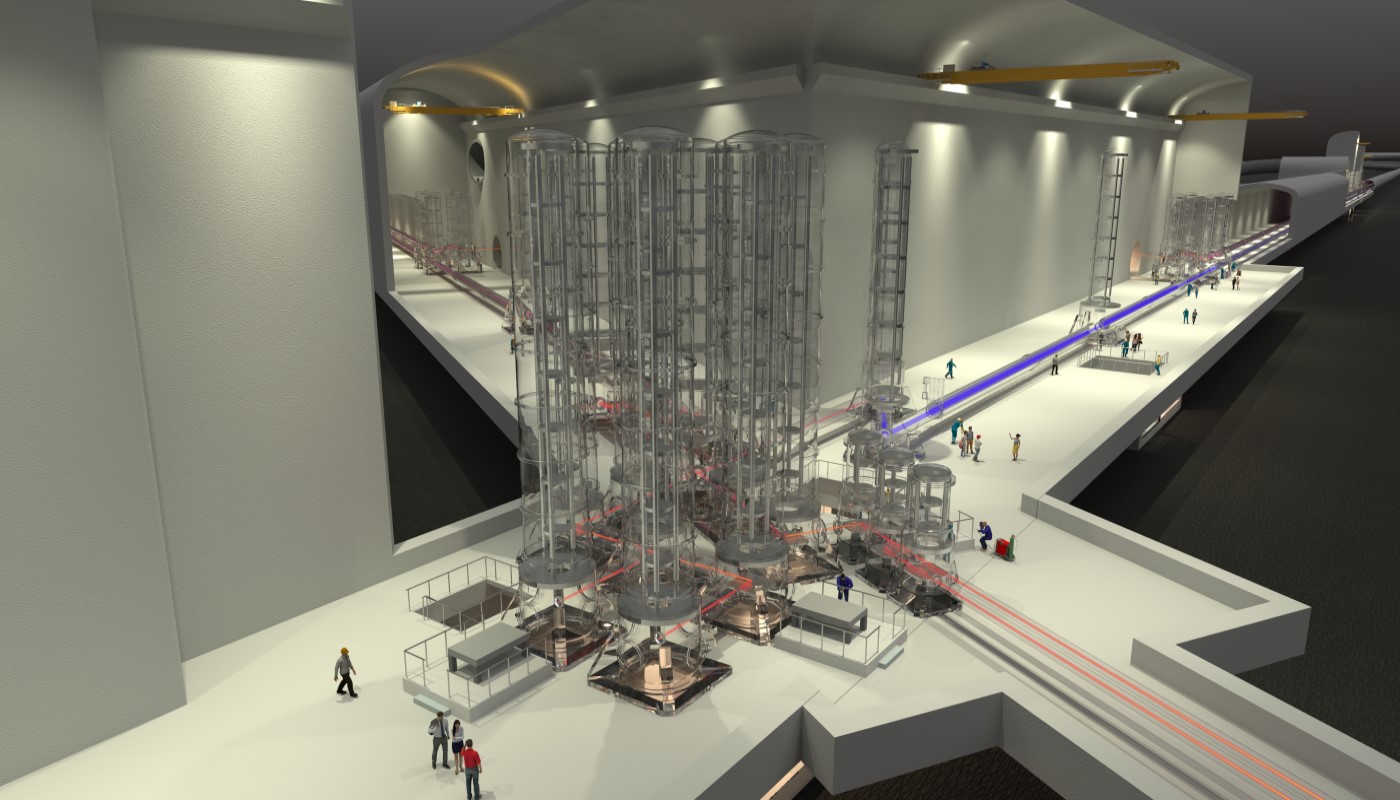From Lusatia to the stars
With the German Center for Astrophysics, we are building a large-scale research center with a forward-looking scientific program, a center for digitization that will bring together data streams from astronomical observatories around the globe, and a center for the latest technologies that will cooperate closely with industry and existing technology centers in Saxony and worldwide. Görlitz has been designated as the location for this.
We are also conducting research in the granite of Lusatia, a place of greatest seismological tranquility. An underground research laboratory, the Low Seismic Lab, is to be built there. For this reason, we have invested the funds of the concept phase in a test drilling in the Ralbitz-Rosenthal community. Beyond the DZA, we are proposing Lusatia as the site of the Einstein telescope. This would be the ideal complement for the DZA and, once again, a tremendous economic boost for the region.
The DZA is a joint initiative of German astronomy and astroparticle physics. Numerous strong partners from science, industry, politics and society support our proposal.
Facts & Figures
- 2 locations: Görlitz and between Hoyerswerda, Kamenz and Bautzen
- More than 350 scientific, 350 technical, 200 administrative and 100 training positions directly at the DZA
- Vocational training from daycare on
- International Astrophysics Data Center
- Low Seismic Lab: Underground laboratory 200 meters deep in Lusatian granite
- Possible location for the Einstein telescope

Where knowledge becomes reality
We do not conduct research in a quiet chamber; we promote and depend on exchange with business and industry. For new astronomical sensor systems, optics, modern control techniques and high-performance green computing solutions
What is planned where?
The campus in Görlitz
The city of Görlitz is an excellent location for the DZA due to its location to the granite massif, its proximity to the university cities of Dresden, Wroclaw and Prague and due to the promising new settlements in the innovation and high-tech sector. We are planning to establish an open campus for cutting-edge research here on the Kahlbaum site, embedded in the city. Through joint appointments, the TU Dresden and the University of Wroclaw will also be places of activity for the DZA.

Laboratory in the granite stock of Lusatia
The Low Seismic Lab in the granite of Lusatia is planned in the region between Hoyerswerda, Kamenz and Bautzen. The lab could be the tying point for the Einstein telescope and form a corner of the planned triangular gravitational wave observatory. The exact location in the triangle between Hoyerswerda, Bautzen and Kamenz has not yet been determined. The decision is to be made in the course of the construction phase with the help of further test drillings in the granite of Lusatia.
We create a place of absolute calm: the "seismic zero".

Astrophysics - research at the limit of the possible
New observatories receive various "messengers" of the universe, such as light signals of different wavelengths. It is no longer just optical telescopes that provide information about our cosmos: Astronomy's "eyes" have been joined by "ears," so to speak; we measure cosmic rays, neutrinos, and now gravitational waves - the reverberations of spectacular events in the depths of space. This requires the most sensitive and accurate measurement techniques - and an ideal interference-free environment such as we find in the granite stock of Lusatia.
Why in Saxony?
Saxony is a high-tech state with a long tradition. The conditions here are excellent: the location in the center of Europe, universities and colleges with a scientific, technological focus, many scientific connecting points, also cross-border. There are also many partners in the region in the areas of technology development and data processing, from the TU Dresden to Silicon Saxony.
Above all, however, Lusatia is sitting on a treasure - the unique seismographic conditions in the granite rock of Lusatia, which we want to use for our research and development of new devices. And last but not least, we have met people who are firmly rooted in their region and at the same time bring great openness and curiosity with them. All this makes Saxony an ideal location for the DZA.
Saxony is a high-tech state in the center of Europe.
